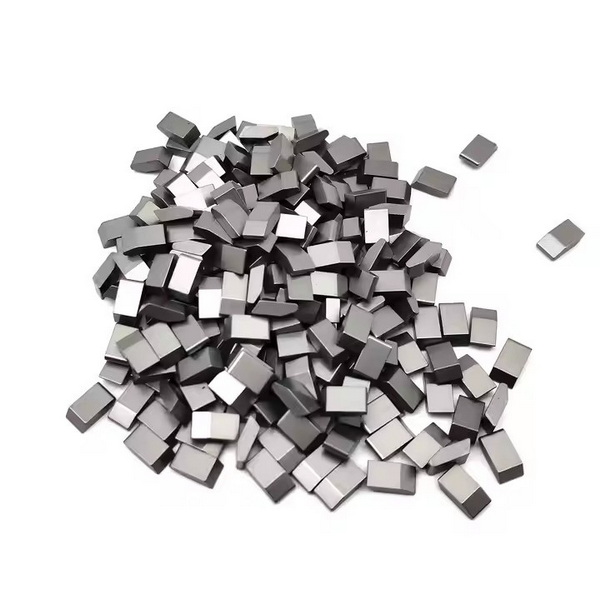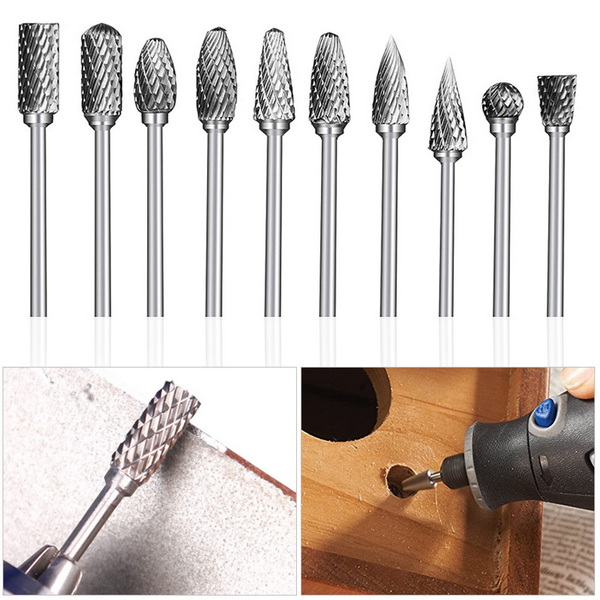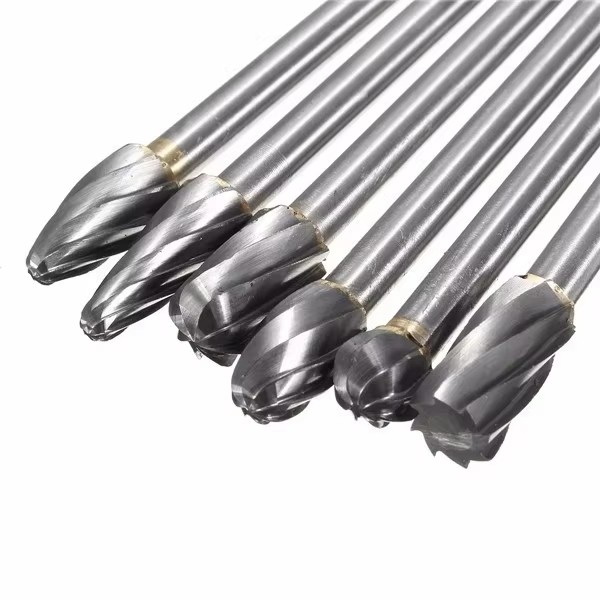Content Menu
● Introduction to Tungsten Carbide and Steel
>> Tungsten Carbide
>> Steel
● Price Comparison
>> Tungsten Carbide Pricing
>> Steel Pricing
● Applications and Market Dynamics
>> Tungsten Carbide Applications
>> Steel Applications
>> Emerging Trends in Tungsten Carbide
>> Emerging Trends in Steel
● Production Process Comparison
>> Tungsten Carbide Production
>> Steel Production
● Conclusion
● FAQ
>> 1. What are the primary reasons for the high cost of tungsten carbide?
>> 2. How does the hardness of tungsten carbide compare to steel?
>> 3. What are some common applications of tungsten carbide?
>> 4. Why is steel more widely used than tungsten carbide?
>> 5. How do market dynamics affect the prices of tungsten carbide and steel?
● Citations:
Tungsten carbide and steel are two vastly different materials used in various industries due to their unique properties. Tungsten carbide is renowned for its exceptional hardness and wear resistance, making it ideal for applications requiring durability and longevity, such as cutting tools and wear parts. On the other hand, steel is widely used due to its strength, ductility, and cost-effectiveness, making it a staple in construction, automotive, and consumer goods. This article will delve into the price comparison between tungsten carbide and steel, exploring their properties, applications, and market dynamics.

Introduction to Tungsten Carbide and Steel
Tungsten Carbide
Tungsten carbide is a chemical compound consisting of tungsten and carbon. It is known for its high melting point, hardness, and resistance to wear and corrosion. These properties make it an essential material in industries such as mining, drilling, and manufacturing, where tools need to withstand extreme conditions.
Tungsten Carbide Properties:
- Hardness: Approximately 9.0–9.5 on the Mohs scale.
- Melting Point: 2,870 °C.
- Density: About twice that of steel.
- Applications: Cutting tools, wear parts, jewelry, aerospace.
Steel
Steel is an alloy primarily composed of iron and carbon. It is valued for its strength, ductility, and affordability, making it ubiquitous in construction, automotive, and consumer products.
Steel Properties:
- Strength: High tensile strength.
- Ductility: Can be shaped without fracturing.
- Density: Approximately 7,850 kg/m³.
- Applications: Construction, automotive, appliances.
Price Comparison
Tungsten Carbide Pricing
The price of tungsten carbide is significantly higher than that of steel due to several factors:
- Raw Material Cost: Tungsten is rare and expensive.
- Production Complexity: Tungsten carbide requires specialized equipment and processes.
- Market Demand: Used in niche applications where durability is critical.
As of early 2025, the price range for tungsten carbide powder is approximately USD 38.18 to 38.67 per kilogram, while tungsten carbide products like drill bits and wear parts can be even more expensive due to their complex manufacturing process[7].
Steel Pricing
Steel prices are generally lower and more volatile, influenced by global supply and demand dynamics:
- Abundant Supply: Steel is produced in large quantities worldwide.
- Market Fluctuations: Prices can drop due to oversupply or rise with increased demand.
In early 2025, steel prices were expected to continue declining due to oversupply and weak demand in sectors like construction and automotive[6]. The ferrous scrap market, which significantly impacts steel production costs, showed sustained price momentum through March 2025, with prime scrap grades reaching $475 per gross ton[3].
Applications and Market Dynamics
Tungsten Carbide Applications
Tungsten carbide's hardness and wear resistance make it ideal for:
- Cutting Tools: Drills, saw blades, and milling tools.
- Wear Parts: Nozzles, dies, and other components subject to high wear.
- Jewelry: Used in wedding bands due to its durability and aesthetic appeal.
Steel Applications
Steel's versatility and cost-effectiveness make it suitable for:
- Construction: Beams, columns, and rebar.
- Automotive: Body frames, engine components, and tools.
- Consumer Goods: Appliances, furniture, and machinery.
Emerging Trends in Tungsten Carbide
The tungsten carbide market is witnessing robust expansion due to its excellent wear resistance and high compressive strength. Demand is particularly driven by industries such as aerospace and defense, automotive, and construction. The rise of 3D printing and chipless forming techniques is further enhancing its utilization in manufacturing[5]. Additionally, novel applications in electronic devices and medical equipment are developing new income channels and supplementing its commercial prospects beyond conventional industries[2].
Emerging Trends in Steel
The steel industry continues to experience significant developments across its major consuming sectors. Trends include a robust scrap metal market, continued growth in construction planning, and challenges in the agricultural equipment sector. Sustainability has become a central focus, with manufacturers increasingly investing in green technologies to minimize carbon emissions[3]. Digital transformation is also becoming prevalent across the industry, enhancing operational efficiency and streamlining manufacturing processes[3].

Production Process Comparison
Tungsten Carbide Production
Tungsten carbide is produced through a complex process involving the sintering of tungsten carbide particles with a binder, typically cobalt. This process requires specialized equipment and techniques due to the hardness and high melting point of tungsten carbide. The production involves several stages:
1. Powder Preparation: Mixing tungsten carbide powder with cobalt.
2. Shaping: Forming the mixture into the desired shape.
3. Sintering: Heating the shaped part to high temperatures to achieve full hardness.
4. Machining: Final shaping using diamond tools due to its extreme hardness[1].
Steel Production
Steel production involves the smelting of iron ore and carbon in a blast furnace or electric arc furnace. The process is well-established and scalable, allowing for high-volume production:
1. Iron Ore Extraction: Mining iron ore.
2. Smelting: Heating iron ore with carbon in a furnace.
3. Refining: Removing impurities to achieve desired steel properties.
4. Rolling: Shaping the steel into various forms like sheets or beams.
Conclusion
In conclusion, while tungsten carbide is significantly more expensive than steel due to its rarity and production complexity, it offers unparalleled hardness and durability, making it indispensable in specific industries. Steel, on the other hand, is widely used due to its strength, ductility, and cost-effectiveness. The choice between these materials depends on the specific requirements of the application.

FAQ
1. What are the primary reasons for the high cost of tungsten carbide?
The high cost of tungsten carbide is primarily due to the rarity of tungsten, the complexity of its production process, and the specialized equipment required for its manufacture[4].
2. How does the hardness of tungsten carbide compare to steel?
Tungsten carbide is significantly harder than steel, ranking about 9.0–9.5 on the Mohs scale, while steel typically ranges from 40 to 70 on the Rockwell hardness scale[4].
3. What are some common applications of tungsten carbide?
Tungsten carbide is commonly used in cutting tools, wear parts, jewelry, and the aerospace industry due to its exceptional hardness and wear resistance[2].
4. Why is steel more widely used than tungsten carbide?
Steel is more widely used due to its abundance, lower cost, and versatility in various applications, including construction, automotive, and consumer goods[4].
5. How do market dynamics affect the prices of tungsten carbide and steel?
Tungsten carbide prices are less volatile due to its niche applications, while steel prices fluctuate more significantly based on global supply and demand dynamics[3][5].
Citations:
[1] https://blog.carbideprocessors.com/tungsten-carbide/price-difference-between-carbide-and-steel-wear-parts/
[2] https://www.fortunebusinessinsights.com/tungsten-carbide-market-111396
[3] https://steelindustry.news/steel-market-analysis-2025-trends-in-scrap-metal-dodge-momentum-index-and-agricultural-equipment/
[4] https://shop.machinemfg.com/tungsten-vs-steel-a-comprehensive-analysis/
[5] https://finance.yahoo.com/news/tungsten-carbide-market-size-set-100200230.html
[6] https://www.metal.com/en/newscontent/103111255
[7] https://www.metal.com/en/markets/24
[8] https://www.skyquestt.com/report/tungsten-carbide-market
[9] https://tradingeconomics.com/commodity/steel
[10] https://cowseal.com/carbide-vs-steel/
[11] https://www.marketresearchfuture.com/reports/tungsten-carbide-market/market-trends
[12] https://www.eurofer.eu/assets/publications/economic-market-outlook/economic-and-steel-market-outlook-2025-2026-first-quarter/EUROFER_Economic-Report-Q1-2025.pdf
[13] https://www.argusmedia.com/ja/news-and-insights/latest-market-news/1956766-tungsten-carbide-scrap-hits-new-lows-amid-headwinds
[14] https://www.coherentmarketinsights.com/industry-reports/tungsten-carbide-market/market-size-and-trends
[15] https://www.eurofer.eu/publications/economic-market-outlook/economic-and-steel-market-outlook-2025-2026-first-quarter
[16] https://industrialmetalservice.com/metal-university/differentiating-tungsten-carbide-vs-steel-and-other-tooling/
[17] https://www.maximizemarketresearch.com/market-report/global-tungsten-carbide-market/66773/
[18] https://www.industrialtube.com/blog/2025/01/20/the-state-of-steel-january-2025/
[19] https://www.carbide-products.com/blog/tungsten-carbide-and-hss/
[20] https://www.imarcgroup.com/tungsten-carbide-market
















